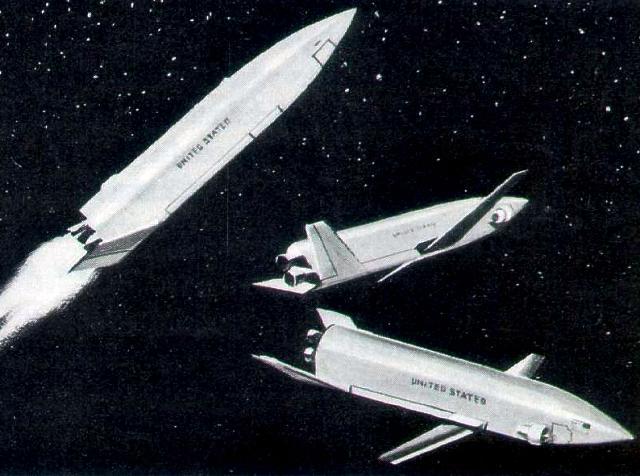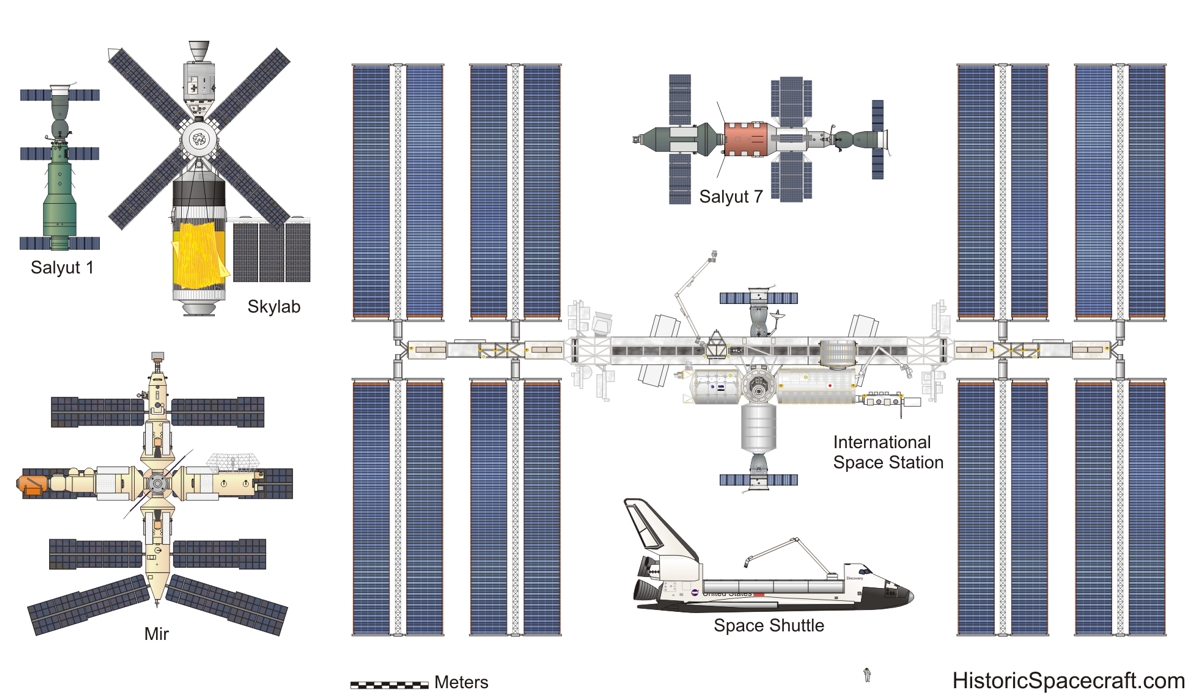Spaceplanes - Cases for and Against
Discussion
Having just watched another enjoyable TMRO broadcast on this topic, I was wondering what views the space cadets here on PH might have on the subject.
https://www.youtube.com/watch?v=x00MCQWBFV8
https://www.youtube.com/watch?v=x00MCQWBFV8
scubadude said:
IMO We haven't yet had a "proper" spaceplane yet, the shuttle and others are (arguably) rocket launched gliders not Space capable Planes, ie- they don't take off from runways or have major cross range.
While SpaceX are making waves with rockets that can be reused it hard to see people pouring the required funds into spaceplanes.
Funding Skylon is really the only way forwards IMO, not sure why the hosts where so negative towards it?
Childish aside- linked video is proof why newscasters use desks with fronts... what has been seen cannot be unseen :-O
I think the only negativity towards Skylon was in relation to what happens with a catastrophic engine failure. But to be honest, a catastrophic engine failure on any space vehicle is likely to result in the loss of the vehicle. While SpaceX are making waves with rockets that can be reused it hard to see people pouring the required funds into spaceplanes.
Funding Skylon is really the only way forwards IMO, not sure why the hosts where so negative towards it?
Childish aside- linked video is proof why newscasters use desks with fronts... what has been seen cannot be unseen :-O
I think with any winged spaceplane type vehicle, getting a crew away from an explosive event to safety is always going to be problematic. On the Space Shuttle, they just gave up on any safety measures and decided "It will never happen". Not the right answer - it turned out.
A capsule can always be jettisoned and used as an escape pod - as has been used twice in the history of manned spaceflight..
The US military never retrieved anything with the Shuttle. Indeed, they hardly conducted any of the grandiose plans they had for it.
Getting large, heavy, craft into orbit requires a huge amount of energy. The Shuttle orbiter weighed just under 90 tonnes. Accelerating a mass like that to 17,500 mph and an altitude of over 200 miles is just an enormous task requiring enormous expenditure of energy.
And it always will be - no matter how you go about doing it.
Getting large, heavy, craft into orbit requires a huge amount of energy. The Shuttle orbiter weighed just under 90 tonnes. Accelerating a mass like that to 17,500 mph and an altitude of over 200 miles is just an enormous task requiring enormous expenditure of energy.
And it always will be - no matter how you go about doing it.
ash73 said:
Eric Mc said:
The US military never retrieved anything with the Shuttle.
You're probably right but I doubt we would know if they did. It was certainly one of the unique capabilities of the Shuttle.At the moment, the movements of the unmanned mini-Shuttle X-37 are being monitored by amateur satellite spotters - and no doubt by more serious observers too - such as the Russians and the Chinese.
It was this retrieval capability that scared the Russians so much - and prompted them to start their Buran programme.
As it turned out, after the Challenger accident, the USAF backed off the Shuttle pretty quickly and instigated no new Shuttle based programmes. When the Shuttle returned to flight in 1988, the only DoD flights conducted were those that had been scheduled pre 1986.
scubadude said:
This is true but I don't see why a ground up design couldn't include a escape capsule (ala F-111) during climb to orbit a space plane is a rocket with wings (unless cunningly folded or in a fairing) there is no reason it can't have a crew abort system.
In the shuttles case, having the crew compartment alongside the fuel tank was an issue in this regard, although I believe they did originally look at an inline stack design that would have offered the crew abit more seperation it was abandoned (I expect Eric has an image :-)
I suspect the real question is- Do we need a space plane? Currently we don't.
They did indeed look at a simpler stacked method during the early configuration studies - In the shuttles case, having the crew compartment alongside the fuel tank was an issue in this regard, although I believe they did originally look at an inline stack design that would have offered the crew abit more seperation it was abandoned (I expect Eric has an image :-)
I suspect the real question is- Do we need a space plane? Currently we don't.

The other major issue is that rocketing a winged vehicle at massive acceleration away from an exploding booster is likely to rip the wings off the vehicle.
Indeed, in the Challenger accident, the orbiter broke up because of the excessive aerodynamic loads placed up in as it was pushed away from the collapsing External Tank.
During launch, having wings sticking out into the airflow really puts limitations on the ascent profiles possible and the abort options.
Very strange goings on there. You do get odd characters getting involved in space projects sometimes. In the late 1970s there was a German/Zaire (yes - Zaire) project called OTRAG which was supposed to establish a commercial launch vehicle and launch site in west Africa.
That was very murky and there were hints of corruption an illegal activities. As far as I know, it never came to fruition.
That was very murky and there were hints of corruption an illegal activities. As far as I know, it never came to fruition.
It was around the same time. Zaire really wanted to put itself "on the map" at that time.
https://www.youtube.com/watch?v=vbYwBy7BbXE
https://www.youtube.com/watch?v=vbYwBy7BbXE
There was a bit of a hoo hah a few weeks ago when a NOTAM was issued to all aircraft flying in or around the Cape Canaveral area which indicated that the X-37 was heading back for a landing on the old Shuttle strip. It turned out it was an exercise and the X-37 is still in orbit.
However, you never know, the next landing might very well be at Cape Canaveral.
However, you never know, the next landing might very well be at Cape Canaveral.
It would have cost a fortune to develop - probably more than the Saturn V. The flyback booster would have needed a higher thrust setting than a Saturn V as well.
If the orbiter was only intended to carry humans to and from a space station with virtually no cargo carrying capacity, then a fully reusable system might have been feasible.
Once they changed the specification to turn the orbiter into a manned cargo truck, then a flyback booster became just too ambitious.
Here's a picture of the original concept favoured by NASA. This dates from around 1970 -

If the orbiter was only intended to carry humans to and from a space station with virtually no cargo carrying capacity, then a fully reusable system might have been feasible.
Once they changed the specification to turn the orbiter into a manned cargo truck, then a flyback booster became just too ambitious.
Here's a picture of the original concept favoured by NASA. This dates from around 1970 -

It was all about allowed budgets.
For the first time in NASA's history of manned spaceflight programmes, they were given a fixed budget by the Office of Budget Management (run at the time by Casper Weinberger) limiting development costs to $10 billion. They were also not allowed any increases due to inflation - which, I'm sure you know, was a tough restriction at the time because inflation rates between 1973 and 1976 were often over 20%.
This, in effect, meant that the $10 billion they were allocated was shrinking by almost 1/4 every year for about three of the years of maximum development costs. That was a real body blow.
It was the approval of the very restricted budget that more or less killed a fully reusable system stone dead. NASA had estimated the development costs of a fully reusable system would be around $20 to $30 billion (more than Apollo) so they were never going to get that type of money.
It is true that, if a reliable fully reusable system had been used, operational costs would, in theory, have been cheaper. However, as was discovered during the actual Shuttle operations, making high energy liquid fuelled rocket engines reusable turned out to be very difficult and expensive and tougher than NASA envisaged in 1971 when they were looking at fully reusable systems.
So, I expect the savings in operational costs of a fully reusable system my not have been as great as originally thought.
For the first time in NASA's history of manned spaceflight programmes, they were given a fixed budget by the Office of Budget Management (run at the time by Casper Weinberger) limiting development costs to $10 billion. They were also not allowed any increases due to inflation - which, I'm sure you know, was a tough restriction at the time because inflation rates between 1973 and 1976 were often over 20%.
This, in effect, meant that the $10 billion they were allocated was shrinking by almost 1/4 every year for about three of the years of maximum development costs. That was a real body blow.
It was the approval of the very restricted budget that more or less killed a fully reusable system stone dead. NASA had estimated the development costs of a fully reusable system would be around $20 to $30 billion (more than Apollo) so they were never going to get that type of money.
It is true that, if a reliable fully reusable system had been used, operational costs would, in theory, have been cheaper. However, as was discovered during the actual Shuttle operations, making high energy liquid fuelled rocket engines reusable turned out to be very difficult and expensive and tougher than NASA envisaged in 1971 when they were looking at fully reusable systems.
So, I expect the savings in operational costs of a fully reusable system my not have been as great as originally thought.
Satellite retrieval had never been in NASA's original justification for the Shuttle. Indeed, as I said earlier, its original mission was to simply ferry people and some small loads of equipment to a space station.
Once the space station was axed, NASA had to try and create uses for the Shuttle - as it was the only programme they were being allowed.
Eventually, in order to justify their meaness when it came to funding Shuttle development, Congress decreed that the Shuttle would be the US's ONLY launcher and that all unmanned throwaway rockets would be retired.
The Challenger accident brought an end to all that nonsense as it became blindingly obvious that being 100% dependent on the Shuttle was utter madness and a massive risk - especially for military operations.
Once the space station was axed, NASA had to try and create uses for the Shuttle - as it was the only programme they were being allowed.
Eventually, in order to justify their meaness when it came to funding Shuttle development, Congress decreed that the Shuttle would be the US's ONLY launcher and that all unmanned throwaway rockets would be retired.
The Challenger accident brought an end to all that nonsense as it became blindingly obvious that being 100% dependent on the Shuttle was utter madness and a massive risk - especially for military operations.
The original 1969 proposed Space Station was never given a name because it was shot down by Congress within months of its announcement.
Apart from the stop-gap Skylab project, which actually did fly between 1973 and 1974, the next proposed space station was "Freedom" which was announced by Ronald Reagan in 1984.
Like so much of NASA's post Apollo projects, it struggled to elicit adequate funding from Congress and dragged on as a paper project for a decade through numerous changes, design rewrites etc. It only finally got proper approval when NASA realised the best way forward was to get international partners on board - chiefly the Europeans, the Japanese and, following the end of the Soviet Union, the Russians.
It was at this point that the programme morphed into the International Space Station (ISS).
Apart from the stop-gap Skylab project, which actually did fly between 1973 and 1974, the next proposed space station was "Freedom" which was announced by Ronald Reagan in 1984.
Like so much of NASA's post Apollo projects, it struggled to elicit adequate funding from Congress and dragged on as a paper project for a decade through numerous changes, design rewrites etc. It only finally got proper approval when NASA realised the best way forward was to get international partners on board - chiefly the Europeans, the Japanese and, following the end of the Soviet Union, the Russians.
It was at this point that the programme morphed into the International Space Station (ISS).
Gandahar said:
Eric Mc said:
Nice to see the runway being used for its intended purpose again. Touchdown speed looks pretty fast - probably (like the Shuttle) around 200 knots.
Indeed, but smaller birds always look quicker  That looked quite a big flare but perhaps that is normal for these types. I am no expert.
That looked quite a big flare but perhaps that is normal for these types. I am no expert.Love that shuttle it goes past.
Edited by Gandahar on Sunday 7th May 18:46
Gassing Station | Science! | Top of Page | What's New | My Stuff








